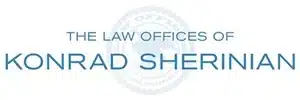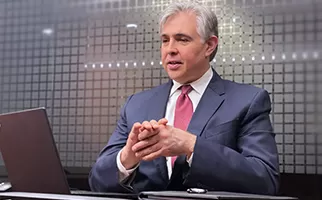TRADEMARK APPLICATION PROCESS
Getting a trademark isn’t as easy as it seems. Here’s the process for applying from start to finish.
Trademarks
The Process For Obtaining a Trademark
Because there are so many elements to the trademark application process, the process can be time consuming and complicated. Even with the guidance of an experienced trademark attorney, the entire application process can take 6 months to a year from start to finish. Making just one minor error can result in your application being rejected. And with each rejection, you have to start all over again.
Fortunately, we have decades of experience helping numerous companies get their trademarks registered in the most efficient means possible. Here’s an outline of that process.
Trademark Search
The general timeline for diligently searching current trademarks and filing for your trademark is less than 1 month.
Before you can obtain a trademark, you have a legal duty to make sure that the trademark is not already in use or registered by another competing company. Although you can search in the USPTO’s Trademark Electronic Search System (TESS) database, it is important to know that there are protected and valid trademark rights that are not registered with the USPTO and may not appear in its database.
At Sherinian Law, we perform a much more extensive search than what is available on TESS, the database that most people first use. This is important because if you file for a trademark and it is already registered, you not only have to begin the process all over again with a new trademark, you will not get your filing fee back.
If you move forward with using a trademark that already belongs to someone else, there are a number of things that could occur. For starters, you could find yourself in legal hot water, which is certain to result in costly legal fees.
Additionally there may be a possibility that you will attempt to obtain a trademark that is already registered, which will result in an application denial by the USPTO. This will require that you start the entire trademark application process over again with a new trademark and you will not get your original filing fee back.
Determining Distinctiveness, Type & Procedure
One of the first determinations of whether something can be trademarked lies in whether you can properly identify your specific goods and/or services in association with the mark as being deemed unique enough. There’s much to be determined with that definition so it’s not a step to take lightly. Here is our page devoted to trademark distinctivness.
After distinctiveness has been established, there are at least four separate types of trademarks to understand, all of which identify different types of sources. These are Trademarks, Service Marks, Certification Marks and Collective Marks. It is important to understand the differences, not just to offer your intellectual property its best protection, but to ensure that you file correctly. Here is our page devoted to the four types of trademarks.
An experienced lawyer can help you determine if your trademark is unique enough to pass licensing laws such as:
• Determining if your mark can be federally registered
• The trademark properly identifies your specific goods and services and is deemed unique enough
• The trademark hasn’t already been used by a competitor
Finally, you will need help choosing what procedure to file your claim by:
Use-Based Applications: These are defined as “bona fide use of a mark in the ordinary course of trade.” These are goods that will be transported between state and country lines for purchase.
Intent to Use Applications: This is your first step in filing a trademark for a product or services that you will be filing a claim of use within a reasonable time.
Foreign Applications: These are used when the owner of the trademark wants to file protection of their goods and services in both the United States and their home country.
Trademark Filing & Registration
The internal review and examination by the U.S. Trademark Office can take about 4 months. An external review by third party opposition (when applicable) can take 6 months or more.
We provide services regarding the registration of a federal trademark on the Principal or Supplemental Register of the United States Patent and Trademark Office. Such registration offers the trademark holder various advantages including notice of the claim by registrant about the ownership of the trademark to the public. These include:
• You may be satisfied with protection of your brand at the state-level, but if you are concerned that you may have issues with businesses out of state bearing the same name, then you should look into further protection. If you want to expand your reach across the nation at a later time, you may feel that a federal trademark will benefit you the most.
• Another advantage of registration on the Principal Register is the legal presumption of ownership of the mark as well as the exclusive right of the registrant to use the mark nationwide on or in association with the products/goods and/or services as listed in the registration.
• Another benefit is that a trademark registrations gives its owner the ability to file a lawsuit regarding the mark in federal court. Further, another key benefit of registration is that it provides the ability to file with the U.S. Customs Service to prevent import of foreign goods that are counterfeits of your product. Finally, a U.S. Registration allows registration in foreign countries through the Madrid Protocol.
Once it is determined that your trademark has not already been registered, your attorney will submit your application. The application is then assigned to an examining attorney. This can take months. If your trademark is rejected, the examining attorney will issue an office action, citing the reasons, and what the reason or reasons for refusal are. You then have up to six months to respond to the office action.
Trademark Approval & Issuance
The final issuance of your trademark can take anywhere from 9-12 months from step one.
If the examining attorney approves your application, or once you have corrected any issues outlined in the office action, your application will then be published in the USPTO’s Official Gazette. If anyone opposes the application, they have 30 days from the date of that publication to object.
If no opposition is filed, or if any oppositions that were filed were unsuccessful, the next step is either registration of the mark or the issuance of a notice of allowance. If a notice of allowance is published, such as if you originally filed an intent-to-use application, you are required to file a statement of use or an extension. You only have six months to do either/or. Failure to do so can result in your application being abandoned.
All of the information will be reviewed by the examining attorney. If there is an issue with what you have filed, an office action will be sent – the same procedure as when you originally filed your application.
Finally, remember that trademarks need to be renewed. The timelines for renewal is during the 5th year, the 10th year, and every 10th year following.
As you can see, this process can be complicated and just making one minor error anywhere along the way can result in your application being rejected. This is why it is critical to have an experienced trademark attorney handling your application.
Let's Talk About Your Trademark
Phone Consultation
Find it easier to talk rather than write? Have a lot of questions you want to ask? Let's talk over the phone.
Virtual Consultation
Need to share something on screen with us? Like to see who you are working with? Let's get online.
In-Person Consultation
Prefer a face-to-face and a handshake? We have offices in Chicago or Naperville, Illinois.
If you have questions about the selection, registration, protection, or enforcement of your mark, talk to us. We offer experienced advice on the availability, registration, use, and enforcement of trademarks.
Available 24/7
Trademark FAQs
Here’s a list of the most frequently asked questions about trademarks. Open each to see our pages dedicated to that topic.
trademark?
A trademark is a distinctive sign, logo, or other symbol that identifies a business, its products, or its services.
How do I trademark a name or logo?
You can trademark a name or logo by applying to a trademark office, conducting a thorough search, and filing an application.
What is the USPTO?
The US Patent and Trademark Office (USPTO) is the federal agency responsible for granting patents and registering trademarks.
Why is a trademark search necessary?
A trademark search ensures your intended trademark is not already in use, thereby preventing potential legal conflicts.
What challenges might I face during a trademark search?
You may need help identifying similar sounding, appearing, or meaning trademarks. Hiring a trademark professional can help navigate these challenges.
What Kinds of Things Can I Trademark?
You can trademark more than your company’s logo. A trademark attorney in Chicago, IL can help you decide what items you can and should register as a trademark. For example, your lawyer may advise you to trademark a slogan or catchphrase.
See our page on trademarks for a more detailed answer.
Do I need trademark or copyright protection?
It might be difficult to understand whether or not you need to register a trademark or a copyright. Both are a type of intellectual property and can protect the rights to your creation or idea.
A copyright is a type of protection for an author’s “original works of authorship”. This could include music, art, screenplays, literary works, and so forth. Copyright does not protect intellectual property such as a slogan, name, title, or short phrase – those are definitely best protected by a trademark.
In some cases, such as a symbol, design, lettering, coloring, or typography, both a copyright and a trademark can provide protection.
A trademark offers the protection of a word, phrase, symbol, design or a combination of these.
It is possible that a logo be protected by copyright and trademark, but this will be dependent upon the amount of originality within the logo. In general the more ornate a logo is, and the more creativity it has, the better chance that it could be protected by both types of intellectual property.
If you have written a novel and are getting ready to publish it, you will likely want to pursue a copyright registration.
Do I need a trademark or patent?
There are many misconceptions concerning patents and a company’s trademark. Simply put, a patent is there to protect a new invention, while a trademark protects the specific branding that goes into promoting that new invention. For example, a patent could be for a specific type of sneaker, and the trademark is how that company markets it.
How much does it cost to hire a trademark attorney?
We offer personalized fixed fee services for Federal trademarks. Reach out to us for a quote based on your specific requirements and to know the average cost for trademark attorney.
What is the average cost of a trademark infringement lawsuit?
Trademark infringement lawsuits can be costly, varying depending on the complexity of the case. Proactively securing your trademark helps minimize the risk of such lawsuits.
How much does it cost to trademark something?
The cost of trademark registration depends on various factors. Contact our law firm for a comprehensive breakdown of the fees involved and trademark price.
What are the filing fees for a trademark application?
Filing fees for a trademark application include USPTO fees for filing your trademarks, examination fees associated with your examining attorney, and maintenance fees. We'll guide you through the fee structure and help you understand the costs.
Why should I hire a trademark attorney?
A trademark attorney ensures that your brand is legally protected and maximizes its value. They save you time, effort, and potential legal costs in the long run.
Experienced Trademark Attorneys
With decades of experience in trademark law, we have helped scores of companies protect their brands. Our team of skilled trademark lawyers and paralegals regularly prepare and prosecute state and federal trademark applications. Throughout the years, we have built an impressive network of other legal professionals outside the state and country, who are able to assist us in international trademark matters. It’s hard to find the experience Sherinian Law brings to the table.




